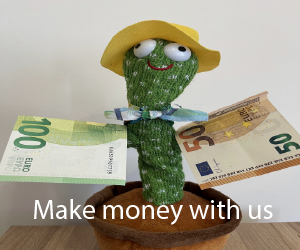
& nbsp & nbsp Άγγελος Νικολάου & nbsp; & nbsp;
The stalemate the Government has faced today with the issue of halloumi is the result of the mistakes made in the last decade and started essentially after the submission of the dossier to the Commission in July 2014. Given the shortage of sheep and goat milk and at the request of cheesemakers, The Government decided to approve a ten-year transitional period, with the aim of 2024, to make the use of raw and sheep milk superior to cow's milk in the preparation of halloumi, according to the application submitted. On July 9, 2014, by decree of the Ministry of Commerce, the minimum ratio of raw and sheep milk was set at 20% with the aim of gradually increasing it to the coverage of 50% provided in the PDO specification.
The mistakes started right after, as yes measures were announced for the creation of new ones and the modernization of the existing sheep and goat farms, but at the same time the Government continued to provide the same incentives to the cow breeders, while from then until today, due to the almost monopoly situation in the industry, continue to enjoy the highest milk prices across Europe. The measures taken especially in the period 2017-2020, significantly enhanced the production of raw and sheep milk, which based on available data increases by about 5,000.0000 per year. At the same time, however, due to the aid to all breeders without exception, the production of cow's milk was also increasing. Financial incentives for everyone did not allow sheep and goat farmers to claim and get better prices for the milk that ended up for cheese-making. The non-claiming of better prices is mainly due to the fact that the sheep and goat farmers are about 3,000 and are not organized, while the cow breeders are 275 and are very well organized and in many cases, apart from producers, they are also cheesemakers.
< p> SEE ALSO: & nbsp;
They also want “halloumi” cow In adventures the halloumi 3 months after its registration In the Republic of Cyprus the control for the halloumi
By providing financial incentives for investment in cow breeding until 2020, the Government did not achieve the goals it set from the very beginning, which was to rid the dairy sector of the crutches of the State, since there was such a high demand for milk. This would be possible if the market were open and the price of each type of milk reflected the demand from industry and not the oligopolistic situation that prevails today in the field of cow's milk.
In 2016, in order to improve the weaknesses identified in the sheep and goat sector and to serve the goal of producing a certified product with high commercial value, ie with the participation of as much goat and sheep milk as possible, the Government decided to move in three directions: ) Increase milk production by improving productivity by improving the genetic potential of existing livestock farms, b) Increase milk production by increasing livestock and c) Address and mitigate the problem of seasonality. & Nbsp;
< p>Looking at the indicators today, it is clear that although the increase of livestock and the increase of milk and productivity of sheep and goats was achieved, unfortunately the problem of seasonality remains even today with particularly reduced production September – December (dry season). So based on the data, while goat's and sheep's milk was growing at an average of about 5 million liters per year, at the same time cow's milk was growing by 15 million liters per year. A cow produces about 7-9 thousand liters of milk per year and a sheep only 300 – 500 liters. The prices enjoyed today by cow breeders are 66 cents per liter, corresponding to € 1.15 for sheep's milk and 0.68 for goat's milk.
Halloumi, the Government had to terminate the subsidies for cow breeding immediately after the submission of the dossier to Brussels. Something that was unfortunately realized with a delay, only in 2020. & nbsp;
But things had to be very different after the product was registered. In other words, a) an increase in the demand for sheep and goat milk and its price was expected, b) a decrease in the production and price of cow's milk and c) a decrease in the production of halloumi. & Nbsp;
In terms of Halloumi marketing is growing without anyone being interested in the final product being made today. We produce 45 thousand tons of “halloumi” per year, when the production e.g. of Roquefort does not exceed 19 thousand tons per year. & nbsp;
The most serious mistake of the Government all these years is that it does not carry out controls on the market to find that the product produced, at least from 2014 onwards, does not contain goat's and sheep's milk based on the decree of the Ministry of Commerce. The oxymoron in this situation is that the controls of the model are in the same Ministry that makes great efforts to increase the exports of the product. & Nbsp;
The absence of strict controls led to impunity in the dairies, which began to prepare halloumi in different shapes (blocks, slices, burgers), with different flavors (chili, basil) and low fat. Products that are not halloumi and were not included in the dossier for the registration of halloumi as PDO. According to official figures, about 35% of these products are now manufactured by industries. & Nbsp;
Kadδή's desperate attempt to save the situation >Following the registration of the product, the Ministry of Agriculture found on October 1, 2021 that the dairy companies not only do not produce PDO halloumi, but have halloumi on the market as before in violation of Community regulations. These products, which deviate substantially from the PDO specifications, can not be called “halloumi”. The Government had the option to request the withdrawal of these products from the market. Instead, the Ministry of Agriculture gave the cheesemakers the opportunity to be heard and entered into a dialogue from the beginning with all stakeholders in order to find the most painless solution for all. After finding them around the basics, they heard & nbsp; extremely dangerous views on both the product and the viability of the sheep and goat breeders. & Nbsp;
Scenarios give and take, and a meeting of all stakeholders is expected to the Ministry of Agriculture to submit the final proposals and then the Minister of Agriculture to take his decisions. & nbsp;
The Ministry of Agriculture proposes a solution based on the product registration agreement, ie 50% -50%, however, instead of the goat and sheep predominating in the milk, it predominates in the product. This is because the convertibility is different and the chemical composition of goat's and sheep's milk has a higher cheese yield. That is, to prepare 1 kg of halloumi from sheep's milk, 5.6 liters are required, 8.6 liters of goat's milk and 10.3 liters of cow's milk. Therefore, the only solution that can be accepted by the Ministry of Agriculture and there are no difficulties in the negotiations with Brussels is the minimum quota in goat and sheep milk to rise from 2024 to 35%. This quota will apply to PDO products, which will include 100% sheep and goat milk halloumi and 35% -65% mixed halloumi. For the rest of the products, an effort will be made to join under the 5% -95% brand for blocks, burgers, slices, with flavors and light. If this solution is accepted then the production of halloumi using 100% goat's and sheep's milk will continue. & Nbsp;




